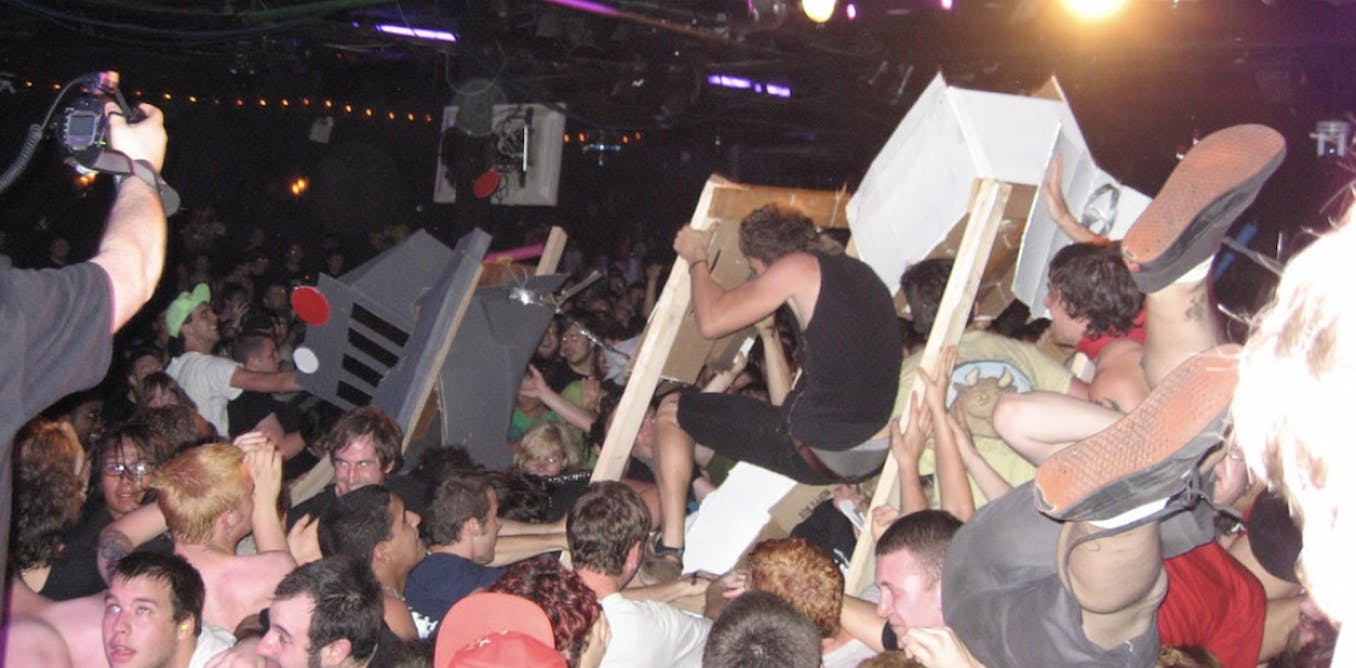The second season of HBO’s House of the Dragon picks up right where the first left off. Rhaenyra Targaryen, played by Emma D’Arcy, is (spoilers ahead) flying across the Narrow Sea in search of the charred remains of her son, Lucerys, and his dragon. Across from the island of Dragonstone, in the capital city of King’s Landing, her half-brother Aegon (Tom Glynn-Carney) sits on the Iron Throne, counseled by his mother Alicent Hightower (Olivia Cooke), grandfather Otto Hightower (Rhys Ifans), and Kingsguard Commander Criston Cole (Fabien Frankel), preparing for a civil war that will change Westeros forever. The Dance of the Dragons is here, and when the dragons dance, the Seven Kingdoms bleed.
At first, fans did not have high hopes for House of the Dragon, based on George R.R. Martin’s 2018 book Fire & Blood, which recounts the history of the Targaryen dynasty from founder Aegon the Conqueror all the way to Daenerys, the silver-haired heroine of the acclaimed and as of yet unfinished book series A Song of Ice and Fire. Game of Thrones, which was Ice and Fire’s TV adaptation, grew into one of the most critically and commercially successful shows of all time — until its final seasons failed to live up to audience expectations. House of the Dragon, which premiered in 2022, might have continued that trend. Instead, the show proved a return to form, offering the same Shakespearean dialogue and political intrigue that made people fall in love with Martin’s fictional universe back in 2011. The second season is just as good, if not better.
Although he wouldn’t admit it himself, much of House of the Dragon’s success can be attributed to its showrunner, Ryan Condal, who, following the departure of Miguel Sapochnik, currently serves as the multinational production’s sole creative executive. Appointed for his encyclopedic knowledge of Martin’s oeuvre, Condal has — in his own words — “played with fire” without getting burned. In the following interview, he demonstrates his mastery of Westerosi lore and explains why all history – real or imagined – ultimately amounts to propaganda. Along the way, he also shares how he deals with stress, procrastination (in his case: “precrastination”), and imposter syndrome — advice that’s relevant for any professional, whether working in Hollywood or not.
Imposter syndrome
Condal is a relative newcomer to television. In his previous life, he graduated from Villanova University with an accounting degree and spent eight years working in pharmaceutical advertising — quite different from working as a Hollywood showrunner, but not entirely unrelated.
“Advertising can be a great prototype job for a writer or showrunner because it involves a lot of lateral thinking and image-driven storytelling,” he tellsBig Thinkover Zoom from his office in London, stocked with props from Star Wars, Tim Burton’s Batman, and The Muppets. “Our audience was doctors, so the copywriting was full of hard science. Essentially, you’d take a complex idea and try to communicate it simply, with a single image. Writing about chronic kidney disease and asthma drugs is obviously not the same as writing a dramatic scene, but it’s still creative work.”
Most people are afraid of switching careers, and when they do change jobs, they find work in a field related to the one they started in. But some skills are more transferrable than you may think.
“I was working in a corporate environment and collaborating with other creatives,” Condal said. “Copywriters work closely with art directors responsible for visuals and layout, and there’s a similarity there to screenwriters working with directors responsible for turning your very cerebral ideas into concrete images. I also learned to compromise, adapting your writing to clients who aren’t always going to love your brilliant, avant-garde choices. That’s the talent-studio relationship, right there. Working on a deadline, on a budget, going into a room to give your presentation, and having someone on the other end of the table buy or not buy them — this stuff is relevant in any industry, Hollywood or not. Coming from a creative but also very corporate environment, I was able to navigate challenges that some of my colleagues with filmmaking and art history degrees maybe weren’t prepped for.”
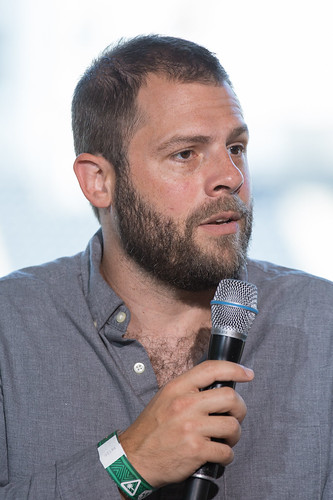
Like Game of Thrones showrunners David Benioff and D.B. Weiss, Condal’s previous film and television experience — a moderately successful but canceled sci-fi show, two Dwayne Johnson movies, and several unproduced screenplays — paled in comparison to the project that HBO put him in charge of. The stress was overwhelming.
“Every day,” Condal confesses when asked if he suffers from imposter syndrome. “For me, though, it was less the scale and scope of House of the Dragon and more its visibility that intimidated me. I was able to make three seasons of Colony, my sci-fi show, rather quietly. We didn’t have these big, flashy premiere events and giant press tours, and while I was the showrunner, I enjoyed a kind of anonymity that I do not have anymore. On Colony, I was writing primarily for myself, working on something that made me happy and creatively satisfied.”
With visibility comes scrutiny. Game of Thrones gave birth to a vast ecosystem of YouTube channels, Reddit forums, and blogs run by fantasy nerds who know Martin’s fictional universe as well as Condal. They’d be able to call him out on the smallest of incongruencies.
“Back in the day, fans had to write physical letters and send them by mail,” Condal says. “Now you can’t even open your phone to check in on a friend without getting assaulted by online criticism.”
While some criticism is valuable, too much can lead to creative paralysis. “I tend more towards the negative than the positive, so I made a conscious decision to stay away from social media when I got this job,” Condal says. If anything, he believes the healthy distance he maintains between himself and his audience has improved the show: “Audiences think they know what they want, but sometimes, they have to be given what they need instead. When they cast Michael Keaton as Batman, there was this huge fan backlash. ‘This isn’t my Batman,’ they said. Now, he is.”
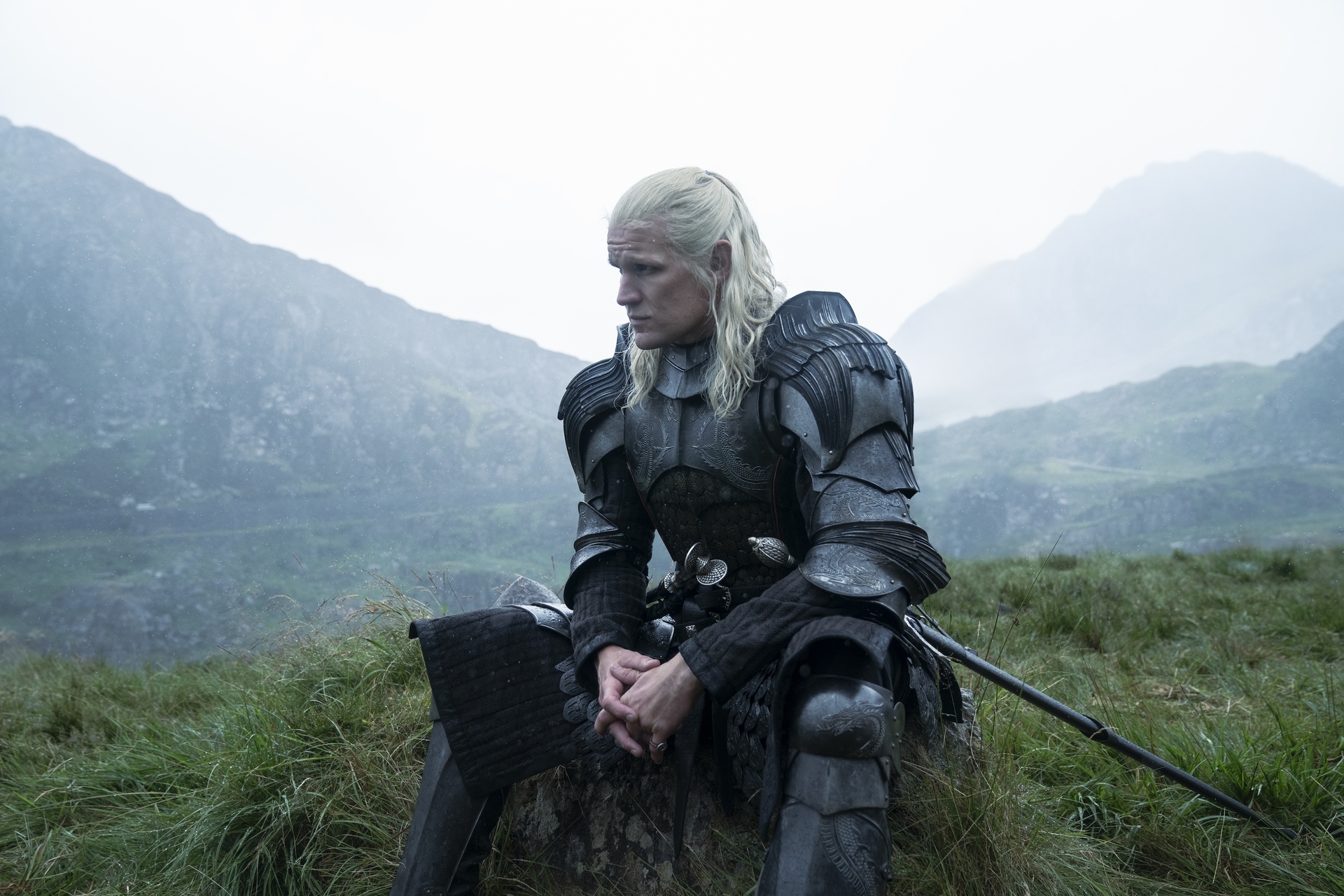
Ultimately, Condal’s own passion for Martin’s writing outweighed any doubt he had about his own. “I’m trying to make the type of show I would enjoy as a fan, which I am. And while I realize my ideal fan show will be different from someone else’s, I still think that it’s a good true north heading on my compass. Actually, I think that’s why HBO hired me in the first place.”
Asked if he ever procrastinates, Condal answers he precrastinates — looking ahead, planning for the future, and anticipating every possible wrench that could be thrown into his plans. The excitement he has for his work keeps him productive, and helps him build strong bonds with his coworkers:
“It was hugely intimidating, moving to a new country [the U.K.] and working with a new but also hugely talented crew that I had to — not tell them what to do, exactly, but lead them; collaborate with them. I definitely had to earn my place, but think that — because I came in with a clear vision of what I wanted for the show — those relationships were easy to establish.”
His excitement also means he doesn’t need to take a lot of time to de-stress from his daily responsibilities. To an extent, it’s a classic case of someone getting energy from their work, rather than the work depleting their energy. If he does want to relax, he doesn’t do so by sitting still but practicing Okinawan karate, a lifelong passion which, for the time being, he practices with his LA-based teacher over Zoom.
Lore of House of the Dragon
The most important part of making a successful fantasy show isn’t the sets, costumes, or special effects, but lore. Fictional places like Westeros have their own unique cultures, customs, and social institutions, all of which help create the illusion that this fantasy world is as real and complex as our own. To transfer that illusion from page to screen, the writers must know Martin’s work as thoroughly as Martin himself.
“It’s not just me,” Condal says. “We are all deeply entrenched fans of George. One of our writers has worked with him for many years. If I’m a graduate in Westeros studies, she’s an archmaester,” referring to the order of academics sworn to advise and educate Westeros’ nobility.
“Textual references are best done in light touches to remind people that this is a fully realized society with hundreds of years of mapped-out history to it. And you don’t need an entire scene to do that. Instead of writing, you can communicate details environmentally through props like heraldry. For the fans, these little touches tell them they are in good hands. Better yet, they know the details are there just for them, the hardcore fans. For everyone else, the casual viewers, this stuff is flying by 100 miles an hour, and they probably won’t notice it. But it’s there.”
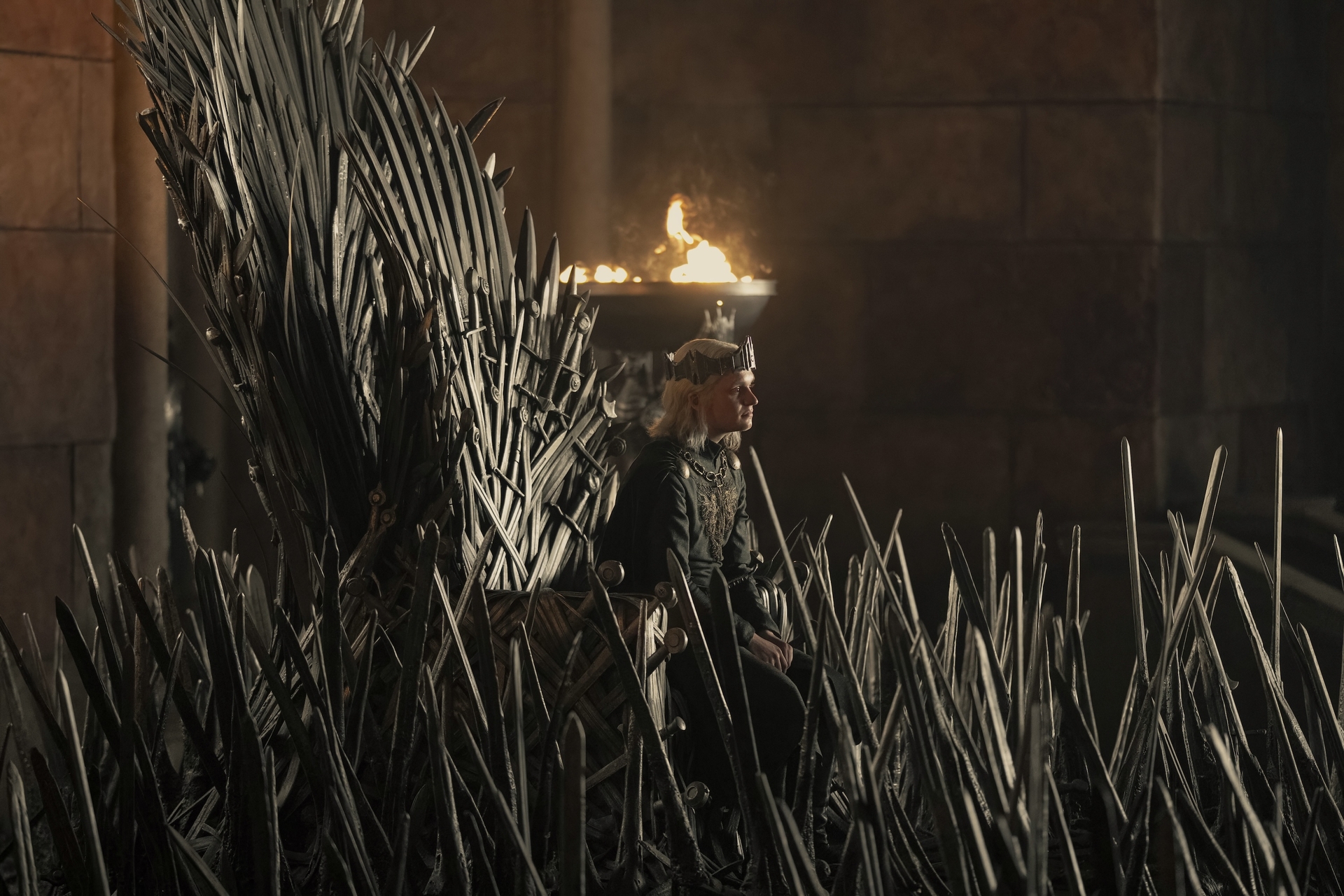
Although many scenes in House of the Dragon take place in locations we previously saw on Game of Thrones, subtle touches remind keen-eyed viewers that this story takes place 200 years earlier. The Iron Throne is surrounded by rows of melted swords, and members of the small council — the head advisers of the king — each have a tiny marble ball they place inside a bowl to signify their presence at the table, a ritual that appears to have disappeared by the time Ned Stark rides south to serve his longtime friend, Robert Baratheon.
The passage of time is also revealed through the presence or absence of certain noble families. The Hightowers, the house of Alicent and Otto, were “a gift from the narrative,” according to Condal, “but there is a reason we don’t see them in Game of Thrones. Their prominent role in this story, in the horrible conflict that is the Targaryen civil war, greatly diminished their status in Westeros. The same goes for the Velaryons, who were once close to the Targaryens but eventually fell out with them. During the time of Game of Thrones, they were only a footnote in Westeros’ power structure. But during House of the Dragon, they were the greatest naval power in the world. Surely, fans will wonder what happened to them.”
Interpreting history
In interviews, Martin has said there are two types of writers: gardeners and architects. Where architects plan out their story from start to finish before they start writing, gardeners plant seeds — inciting incidents, personality conflicts — and then allow the story to grow and evolve on its own terms.
“I’m definitely an architect,” says Condal, “and I think I have to be as a screenwriter, because our life is so deadline-driven. The literal definition of a playwright, W-R-I-G-H-T, is ‘one who builds plays.’ A dramatic writer is almost by necessity a structuralist, and I very much fall into that camp.”Martin, by contrast, identifies as a gardener. While this writing style — with its many unexpected twists, turns, and deaths — helps explain what made Game of Thrones so successful, it may also have been responsible for the show’s eventual downfall. Sticking to Martin’s analogy, “gardening stories” grow like trees, their narratives branching out in an exponential number of paths, making them difficult to finish. As of today, Martin has spent more than 14 years on the next installment in the Song of Ice and Fire series, his prolonged bout of writer’s block forcing Weiss and Benioff to come up with their own ending.
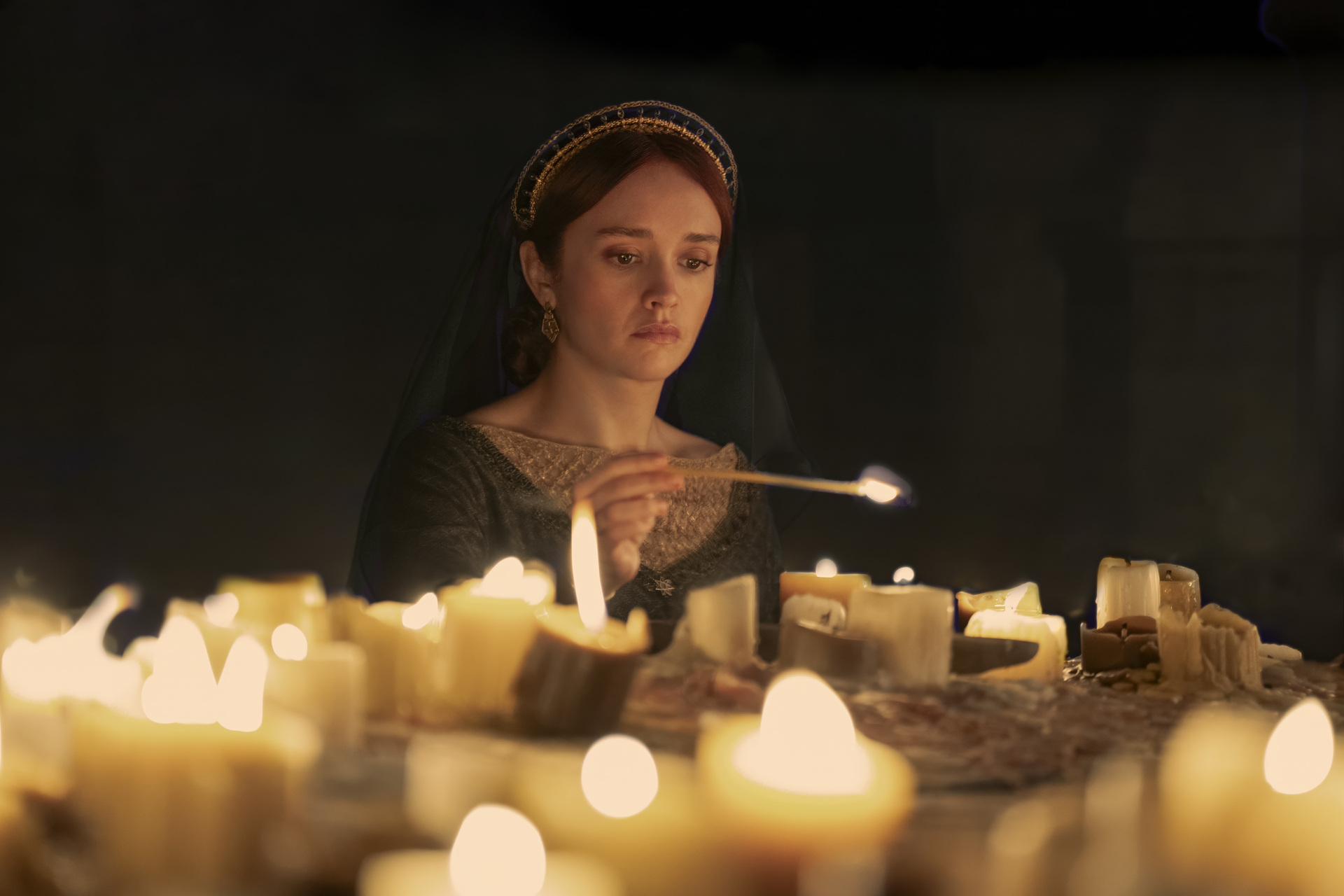
“The advantage we have over them is that we’re dealing with a finished text, where they were working with an unfinished, living work,” Condal says. “Where the Game of Thrones team had to trim down 5,000 pages into a few dozen scripts, we’re challenged in the opposite direction, turning around 100 pages into a multi-season arc of television, and that requires a lot of invention.”
Another major challenge centers on the fact that Fire & Blood, which Martin wrote to procrastinate on finishing Winds of Winter, is not a novel but a historical text written from the perspective of three unreliable narrators: a jester, a maester, and a priest.
Before Condal and the other writers can adapt the history of the Targaryen civil war, they first have to interpret it. “Martin says the jester, maester, and priest wrote down this history years after the actual events took place. If we can’t even agree what really happened on Jan 6th, which was televised, how can we really know what happened in Westeros?”
As a result, Condal treats Fire & Blood like a real-world historian might treat a manuscript from the Middle Ages. “These three writers all had personal agendas which, to me, seem to reflect one of the main themes of our show: powerful women living in an unbreakable patriarchy. The writers, particularly the priest, appear to blame the war on the squabbling between Rhaenyra and Alicent.”
House of the Dragon pretends to show the real history that Fire & Blood recorded and distorted. Some events happen the way the one of the three authors describe it, while others contain elements of all three conflicting accounts. Others still indicate that none of them got it right. As a rule, every character in the show is far more complex than the jester, maester, and priest made them out to be.
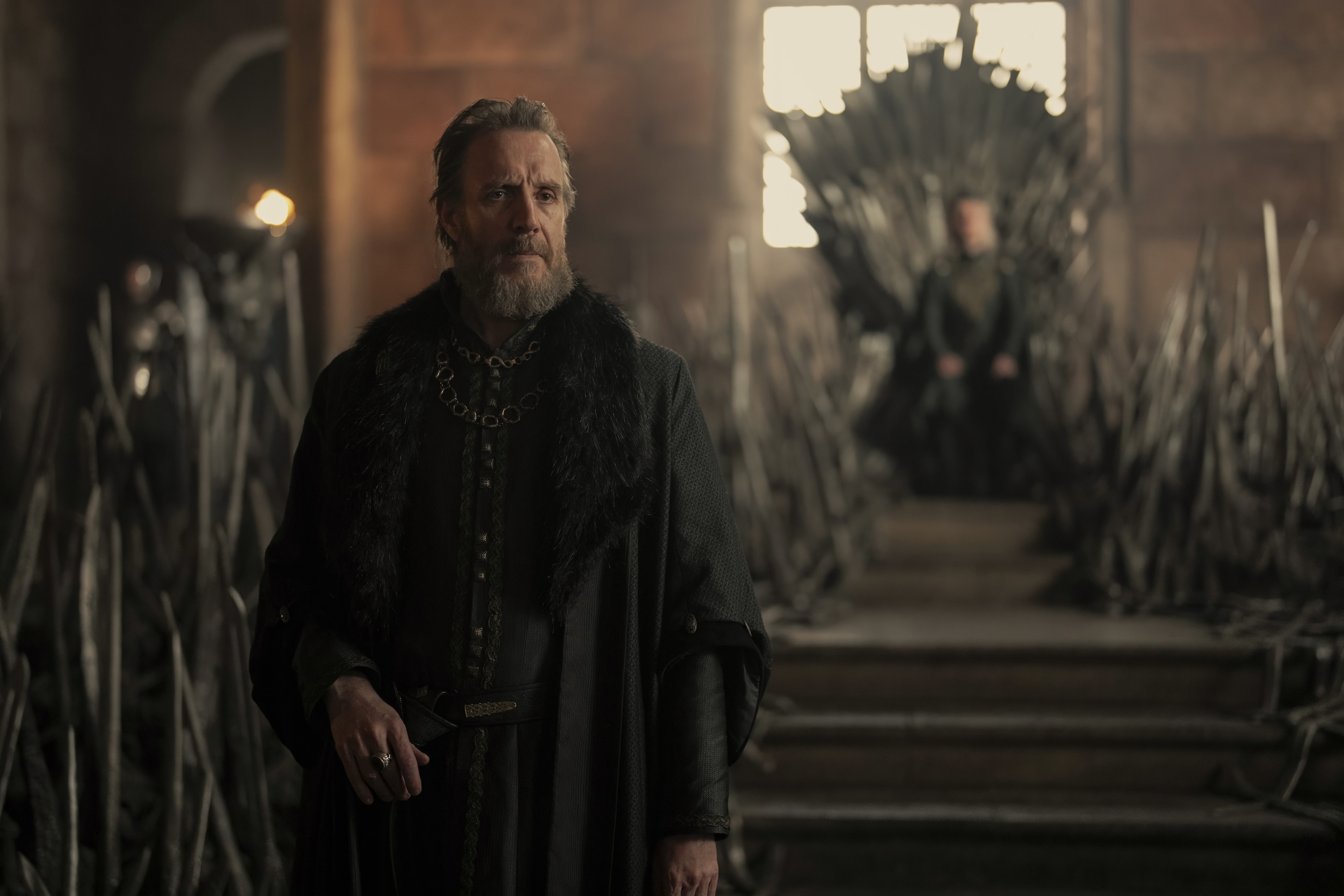
“Alicent can be the stereotypical evil stepmother at times,” says Condal, “just as King Viserys, played by Paddy Considine in season 1, can come across at weak. However, the thing that in-universe historians don’t get about Viserys is that he was carrying the burden of a prophecy passed down through generations and couldn’t tell anybody about it. A lot of his supposedly weak decision-making was actually in service of this secret prophecy. We were trying to show that there was more to him, that multiple things about him could be true at the same time.”
The next season
By the time the first episode of season 2 premiered on HBO on June 16, Condal was already busy writing the third season. “We tend to start the writing process for each season right at the end of production of the previous one,” he explains, “just because that’s the first time you can do two things at once: you’re not running at a breakneck speed (yet) and can gather your thoughts and conduct postmortem analysis.”
“We have to arrive at the same endpoint as the book,” he reminds himself. “Whoever George said becomes king must become king at the end of the war. Hopefully, though, we have a bit of latitude leading up to that, to show how history has been interpreted differently at different times by different historians. I realize I’m playing with fire, but it does excite and fascinate me — to be able to comment on how history is made, not just this fictional history, but all history. It’s all propaganda to some degree.”
This article From fan to showrunner: How “House of the Dragon” creator Ryan Condal landed TV’s biggest job is featured on Big Think.

The post “From fan to showrunner: How “House of the Dragon” creator Ryan Condal landed TV’s biggest job” by Tim Brinkhof was published on 06/19/2024 by bigthink.com



























